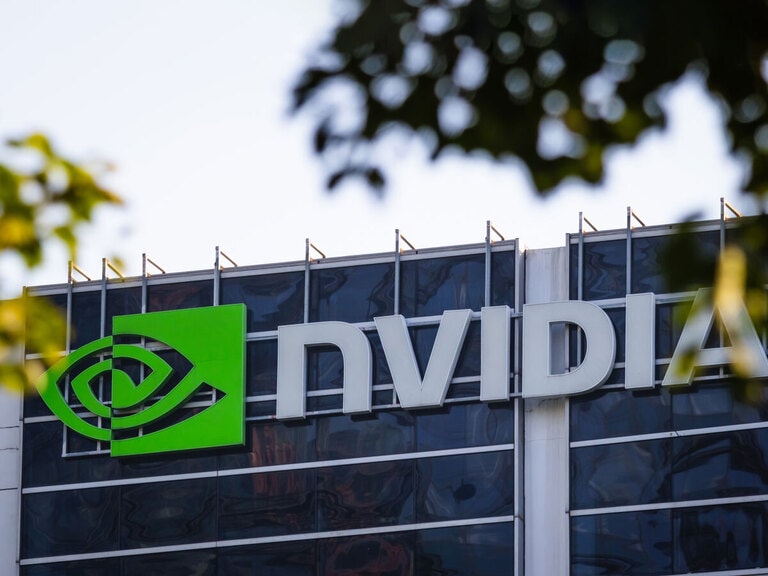Blockchain technology is often conflated with cryptocurrencies, and associated with the speculation that takes place around these assets. While a boom for crypto stocks has driven the performance of the blockchain theme in the first half of 2023, various other developments in the space, from Amazon extending its blockchain-as-a-service offering, to the formation of the first financial institutional blockchain network, are driving the theme. Blockchain technology is often conflated with cryptocurrencies, and associated with the speculation that takes place around these assets. While a boom for crypto stocks has driven the performance of the blockchain theme in the first half of 2023, various other developments in the space, from Amazon extending its blockchain-as-a-service offering, to the formation of the first financial institutional blockchain network, are driving the theme.
- Despite a rocky start, blockchain stocks rallied in the first half of 2023.
- Canton Network represents the first major collaboration among financial institutions leveraging blockchain technology.
- Global X Blockchain ETF has gained 57% in the past six months.
Blockchains are, in effect, distributed digital records. Existing as a global network, each blockchain is nonetheless distinct, and each has individual characteristics and use cases.
While blockchain is sometimes conflated with cryptocurrency, this is just one of the many applications of the technology. Hundreds of blockchains exist for non-cryptocurrency purposes, from supply chain management to medical records and IP management.
However, cryptocurrency is by far its most prevalent use. There are in excess of 23,000 cryptocurrencies in circulation, and each has its own blockchain supporting it. Their characteristics vary considerably. For instance, while the Bitcoin blockchain exists purely to support the bitcoin cryptocurrency, Ethereum can support a wide range of use cases.
From non-fungible tokens to the fight against financial fraud, blockchain technology has the potential to completely transform how information is shared across the global economy. The theme is in its early stages: according to Precedence Research, it was valued at $5.7bn in 2021, but with the potential to reach $1.6trn by 2030, at a massive CAGR of 87.1%.
The blockchain theme binds comprises miners like Riot Platforms [RIOT], exchanges such as Coinbase [COIN], and companies that are directly exposed to cryptocurrency prices, such as MicroStrategy [MSTR].
Advocates of cryptocurrencies, or “decentralised finance” (de-fi), are attracted by the fact that blockchain technology renders these currencies independent of any nation state or central bank.
Over the long term, de-fi proponents argue that cryptocurrencies are more resistant to inflation than fiat currencies, because it is harder to increase the supply of currency. For example, the total number of bitcoins is limited to 21 million, and the rate at which new bitcoins are mined will decrease by half every four years.
The crypto spring
Stocks within the blockchain theme suffered during 2022. Beginning in May, a crash in the value of TerraUSD and Luna stablecoins eroded investor confidence in cryptocurrencies. In June, crypto hedge fund Three Arrows Capital was liquidated after defaulting on a payment to crypto lender Voyager Digital, which filed for bankruptcy itself the following month.
In November, the industry was rocked further by the collapse of leading exchange FTX, with criminal charges brought against its founder, Sam Bankman-Fried.
The price of bitcoin fell over 64% through the year as investors fled cryptocurrencies. The bear market was dubbed a ‘crypto winter’.
However, in 2023 the assets rallied. Bitcoin has gained 59% in the year so far, and miners such as Riot are up over 232%.
Crypto stocks “climbed a wall of worry last year”, Mike Venuto, portfolio manager of the Amplify Transformational Data Sharing ETF [BLOK], told Opto Sessions in May. “Three Arrows… FTX, Voyager, you name it, it happened.”
However, “not a single one of those was really about Bitcoin. And not a single one of those was about decentralised finance, and not a single one of those was about blockchain. All of those were the second-oldest profession in the world, which is financial fraud. They were all Ponzi schemes.”
However, as investors have regained their confidence in the scandal-hit industry, and as interest rates continue to rise globally, cryptocurrencies have regained their status as a popular safe haven against inflation.
Indirect exposure
Buying stocks of companies such as Coinbase has long been considered one of the best ways to gain exposure to cryptocurrencies without directly owning them. But Berenberg analysts suggested in May 2023 that MicroStrategy might be a better means than Coinbase.
“We believe MicroStrategy, which features a unique business model focused on the acquisition and holding of bitcoins, represents an attractive alternative to Coinbase in the current environment,” Berenberg analysts Mark Palmer and Hassan Saleem wrote in a note seen by Coindesk.
In 2021, MicroStrategy sold $500m of bonds in order to purchase bitcoin, and has since continued to buy bitcoin with excess cash. While primarily a producer of business intelligence software, the approach gives MicroStrategy’s stock clear exposure to bitcoin prices. As of March 2023, MicroStrategy’s bitcoin holdings were worth $3.8bn.
MicroStrategy is far from the only technology company diversifying into blockchain technology. Amazon [AMZN] has offered blockchain-as-a-service through Amazon Web Services (AWS) since 2018, enabling users of the service to host their own blockchains on its technology. AWS hosts 25% of all Ethereum networks, according to Amazon.
In January 2023, the ecommerce giant partnered with blockchain start-up Ava Labs to accelerate institutional and governmental adoption of blockchain, by enabling faster node deployment of Ava’s Avalanche network through AWS.
Calls for regulation
The most significant factor in the near-term future of cryptocurrencies is the extent of the regulatory action the US government eventually takes.
“The greatest threat to Bitcoin right now is continued inaction by the US government,” said Venuto. “The longer we wait for some clarity, the more likely we have more scams, which set us back.”
As always, though, what is happening in crypto is in many ways a distraction from the broader potential of blockchain technology, which is developing fast in the world of business, independent of the macro environment.
In early May 2023, a group of financial institutions and other companies including BNP Paribas [BNP.PA], Deloitte, Goldman Sachs [GS] and Microsoft [MSFT] formed the Canton Network, “the industry’s first privacy-enabled interoperable blockchain network”, according to a press release. Built on Daml, a smart contract language from network provider Digital Asset, the “network of networks” will facilitate the secure transfer of data between participant institutions.
Boosting throughput
According to Larry Cermak, CEO of The Block, one of the major innovations in the blockchain space is set to be Layer-two (L2) blockchains, particularly zero-knowledge rollups. These have the potential to bring greater fairness and efficiency, and thus to drive blockchain adoption by increasing reliability.
“The problem we constantly run into is that whenever there is a bull market or any sort of increase in interest, the blockchains just cannot handle the throughput that is required to actually onboard enough users,” said Cermak on this week’s episode of Opto Sessions.
“That discourages users [because it] creates unfair rules where the larger or more wealthy players are the ones that get the benefits of getting into the blocks faster, because they pay more.”
Funds in focus: Global X Blockchain ETF
BLOK, Venuto’s fund, caps each of its segments at a maximum of 25% of its holdings. As of 31 March, transactional stocks (exchanges such as Coinbase, the fund’s seventh-largest holding) accounted for 25% of the fund’s industry allocation. Miners were at 20%, venture at 11%, while application, exposure and private blockchain were each allocated 10%. The rest of the fund’s exposure is to conglomerates and semiconductors.
BLOK is down 9.2% in the past 12 months, and up 20.7% in the past six.
The Global X Blockchain ETF [BKCH] is one of the top-performing blockchain funds of 2023, gaining 57.2% in the past six months, though it is down 18% in the past 12 months. As of 30 April, its holdings are primarily in the information technology (IT) sphere (76.8%), with financials (18.5%), industrials (2.6%), consumer discretionary (1.6%) and real estate (0.5%) following behind.
Investors seeking exposure to companies using blockchain technology without overt crypto exposure can select the First Trust Indxx Innovative Transaction & Process ETF [LEGR]. As of 23 May, the fund offers exposure to financials (37.84%), IT (30.58%), consumer discretionary (8.92%), communication services (8.86%), industrials (5.50%) and utilities (2.98%) companies poised to benefit from blockchain technology, with the rest of its exposure going to consumer staples, materials, healthcare and energy.
LEGR is up 4.1% in the past 12 months and up 7% in the past six.
Continue reading for FREE
- Includes free newsletter updates, unsubscribe anytime. Privacy policy





